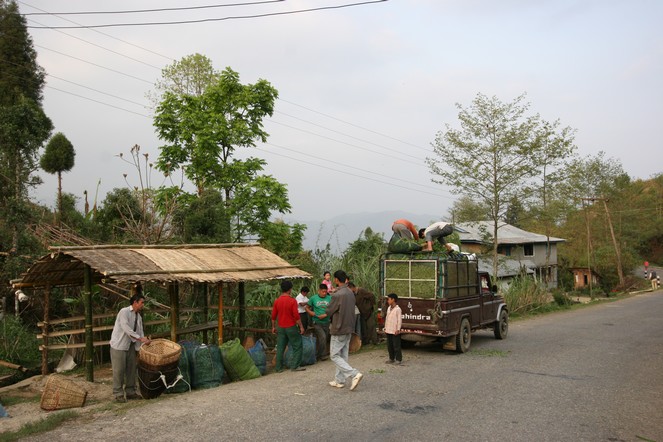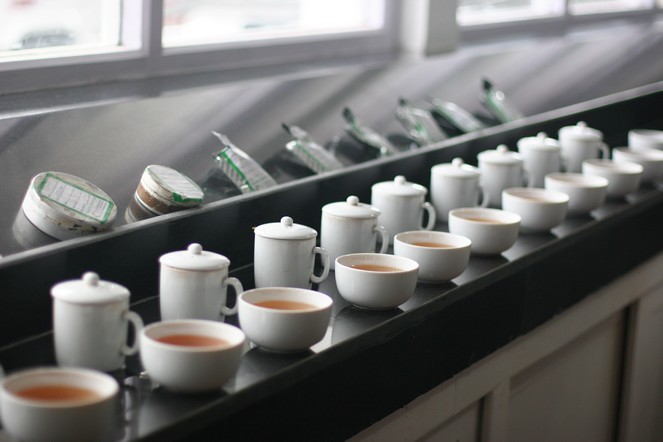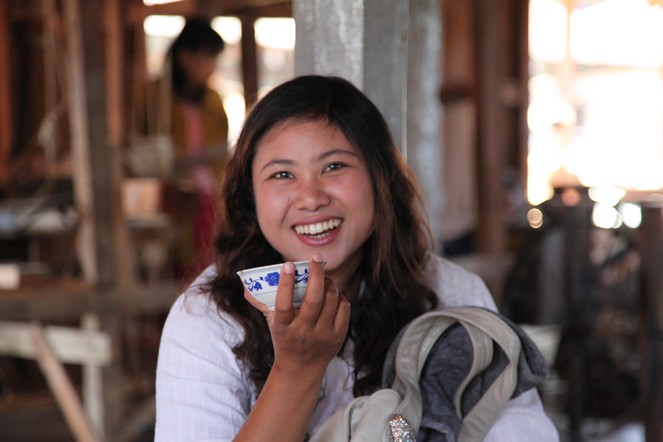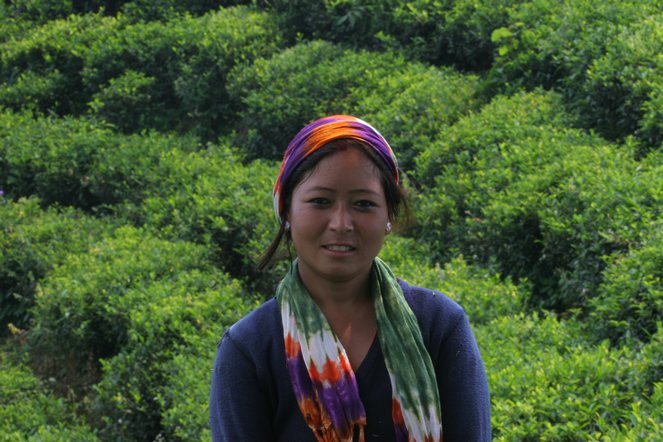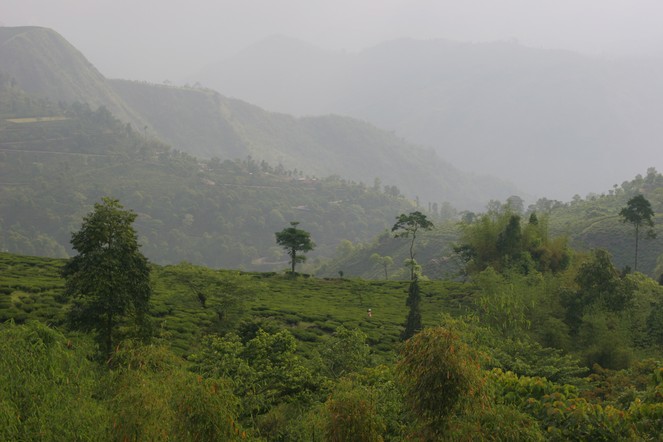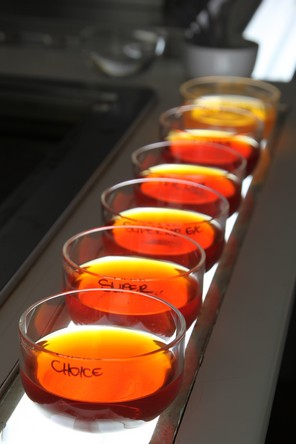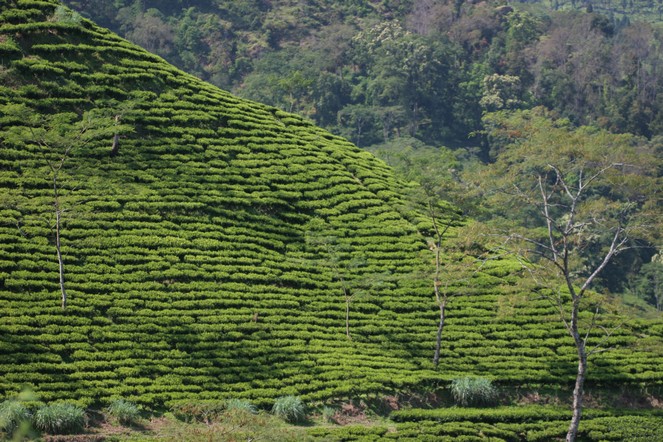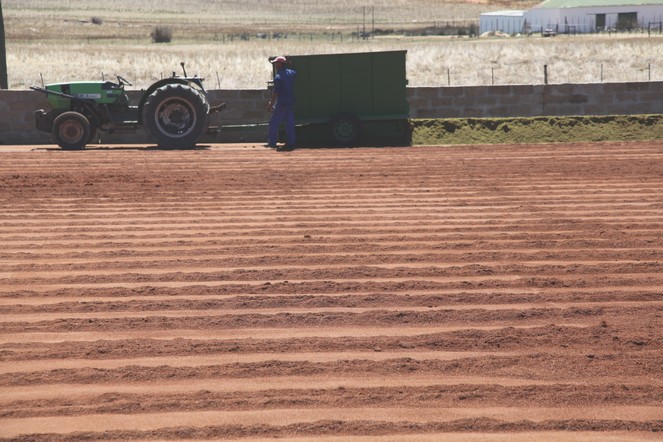If I had to choose one image to illustrate my work, I’d choose this one. A picture of a bridge. A footbridge. A bridge linking two worlds: the world of tea producers on one side with the world of tea enthusiasts on the other.
A bridge between East and West. A bridge between those who cultivate slow living with those who want to return to it. By drinking tea, for example.
The tea harvest in the south of Sri Lanka
Sometimes the people who harvest tea don’t have the necessary equipment to process the leaves. In this case, they sell their crop to another farmer who is able to process it.
This is what happens in the south of Sri Lanka, where each tea factory dispatches vehicles to collect bags from small producers.
Tea tastings
At the moment I’m tasting between 50 and 100 different teas a day.
I try them in series of about 10 or 12. When you taste so many teas at the same time, you spit them out, for obvious reasons. Most importantly, you taste each tea twice, and in a different order, so you’re not influenced by the qualities or flaws of the previous tea.
This is because when you taste several batches in a row, you have a tendency to pick out what is different about them rather than their similarities, and if I didn’t taste each one twice, I could miss out on some wonderful teas.
Tribute to women working in the tea industry
International Women’s Day is an excellent opportunity for me to pay tribute to all women working in the tea industry. From harvesting to processing, from packaging to quality control, tea involves a great deal of work. Many women manage work alongside family life, like the indefatigable Mrs Zhou.
“Why do you drink tea?”
In a recent interview, a journalist asked me why I drink tea.
I drink tea to relax, to find a moment’s peace, to create some space for myself. I drink tea to stay calm, to give myself a break, to do myself good. I drink tea in the same way that others practice yoga, to keep myself feeling good, to replenish. And I also drink tea for the pleasure of making it and the pleasure of serving it to others. I drink tea for the happiness that comes from sharing it.
Waiting for Darjeeling teas
Some time in the next two weeks I should receive the first of a large number of samples from Darjeeling. During the first few days I get just a handful, but as the month goes by, the harvesting intensifies. In March and April, I sometimes taste more than 100 teas in a single day.
This picture is of a plucker who has not yet slung her basket on her back. Like me, she is impatient for the season to start.
News from Darjeeling
This morning, I had the pleasure of meeting Abhishek Bagaria, the owner of Phuguri Tea Estate, Orange Valley Tea Estate and Millikthong Tea Estate. He hopes to be able to go ahead with the harvesting on his various plantations in the next couple of weeks.
After a cold, dry winter, the weather conditions are now favourable. We must now just hope that the political tensions which have reignited over the thorny issue of autonomy for the Darjeeling region will not lead to strikes and road blocks.
There are still hurdles to overcome before we can enjoy these Darjeeling teas – but they will be worth the effort!
Rooibos tastings
There are different grades of rooibos, but not much difference between them. However, the “long cut” offers the most interesting experience in terms of fine flavours and powerful aromas. It is the most harmonious. It is the only grade I have bought for years.
An amusing detail: for rooibos tastings in South Africa, the cups are lit from beneath in order to judge the clarity of the liquor.
In Darjeeling, the spring harvest is approaching
In a few weeks’ time, the spring tea harvest (first flush) will begin in Darjeeling. The weather is a decisive factor in determining the timing of the harvest, and Darjeeling fans will be as happy as I am to learn that it has finally just rained there, after a long period of dryness.
Anil Jha, the planter at Sungma, has just informed me that on the night of 16 February, between 18 and 32 millimetres of rain fell in the region.
The oxidation of rooibos
As soon as they are plucked, the rooibos shoots are cut and sprinkled with water. Then the oxidation process can begin. This takes place outside and causes the leaves to change colour, from green to brown. When it has oxidised to the right degree, the rooibos is spread out on the ground in a fairly thin layer, so it can dry in the sun.


